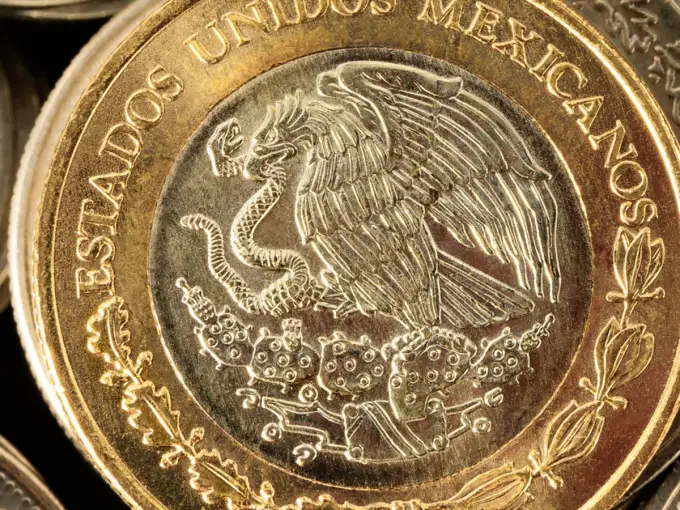The Mexican peso has been on a precipitous decline over the past year, with analysts warning of further depreciation in value as the country navigates treacherous economic waters.
In March, US President Donald Trump announced his intention to impose a 25% tariff on goods imported from Mexico and Canada under the International Emergency Economic Powers Act (IEEPA). While the decision was later scaled back, with carmakers and other compliant industries exempted, the uncertainty surrounding trade policy has already had a significant impact on financial markets.
The peso dropped by as much as 1.5% in the hours following Trump’s tariff announcement, before rebounding slightly. However, the currency’s value remains fragile, having lost over 20% of its value compared to the dollar since last April.
One major risk facing the peso is an escalation of Trump’s trade war, which could lead to further devaluation and a weaker economy. Mexico’s highly trade-dependent economy sends approximately 80% of its exports to the US, making it vulnerable to changes in trade policy.
Many analysts believe that the tariffs will be temporary, with JPMorgan predicting that they will only be in place for a short period. However, others disagree, warning that an increase in either the tariff or its scope could send shockwaves through peso markets and prompt further devaluation.
The Mexican economy is also facing other challenges, including a recession forecast by the Organization for Economic Cooperation and Development (OECD) and high inflation rates above the central bank’s target of 3%. Traders are now expecting the Banco de Mexico to move faster in cutting interest rates to stimulate economic activity and avert a recession.
A Reuters poll taken last week showed that a strong majority of economists expect the central bank to deliver a rate cut of 50 basis points, which would take the benchmark interest rate down to 9%. Looser monetary policy can cause the foreign exchange rate to weaken as traders seek higher-yielding currencies elsewhere.
However, it remains unclear whether the Federal Reserve will follow suit and cut interest rates. The Chairman of the Federal Reserve, Jay Powell, has stated that the US central bank is “not going to be in any hurry to move,” suggesting that the benchmark rate will remain at its current level for the foreseeable future.
The impact of Trump’s tariffs on inflation means it is likely that the Fed will keep interest rates steady to avoid encouraging another round of runaway inflation. This should feed into a stronger dollar for the remainder of the year, at the expense both Mexican peso and emerging market currencies around the world.
Given these trends, many analysts are forecasting further depreciation in the value of the Mexican peso. Banamex has forecast that USD/MXN could weaken to 21 pesos to the dollar from its current level of 20.23, while Goldman Sachs has revised its growth forecast for Mexico this year downward, from 0.3% to zero.
Ultimately, much will depend on the extent to which Trump pursues his aggressive trade policy in practice. If the tariffs are increased or their scope is expanded, it could have a devastating impact on the Mexican economy and further weaken the peso.
Source: Disruption Banking




